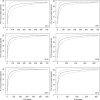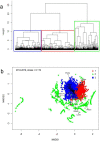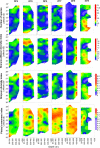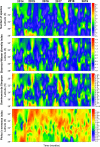Spatio-temporal patterns of the crustacean demersal fishery discard from the south Humboldt Current System, based on scientific observer program (2014-2019)
- PMID: 36848348
- PMCID: PMC9970059
- DOI: 10.1371/journal.pone.0281932
Spatio-temporal patterns of the crustacean demersal fishery discard from the south Humboldt Current System, based on scientific observer program (2014-2019)
Abstract
This study summarises six years of spatio-temporal patterns of the discarded demersal community fauna recorded by onboard scientific observer program for both artisanal and industrial crustacean fisheries between 2014 and 2019, from mesophotic to aphotic depths (96 to 650 m) along the southern Humboldt Current System (28-38°S). In this period, one cold and two warm climatic events were observed during the austral summer 2014, 2015-2016 (ENSO Godzilla), and 2016-2017 (coastal ENSO), respectively. Satellite information showed that Chlorophyll-a concentration varied seasonally and latitudinally, associated with upwelling centres, while equatorial wind stress decreased southward of 36°S. Discards were composed of 108 species, dominated by finfish and molluscs. The Chilean hake Merluccius gayi was dominant and ubiquitous (occurrence, 95% of 9104 hauls), being the most vulnerable species of the bycatch. Three assemblages were identified: assemblage 1 (~200 m deep), dominated by flounders Hippoglossina macrops and lemon crabs Platymera gaudichaudii, assemblage 2 (~260 m deep), dominated by squat lobsters Pleuroncodes monodon and Cervimunida johni and assemblage 3 (~320 m depth), dominated by grenadiers Coelorinchus aconcagua and cardinalfish Epigonus crassicaudus. These assemblages were segregated by depth, and varied by year, and geographic zone. The latter represented changes in the width of the continental shelf, increasing southward of 36°S. Alpha-diversity indexes (richness, Shannon, Simpson, and Pielou) also varied with depth and latitude, with higher diversity in deeper continental waters (>300 m), between 2018-2019. Finally, at a spatial scale of tens of kilometres, and a monthly basis, interannual variations of biodiversity occurred in the demersal community. Surface sea temperature, chlorophyll-a, or wind stress did not correlate with discarded demersal fauna diversity of the crustacean fishery operating along central Chile.
Copyright: © 2023 Landaeta et al. This is an open access article distributed under the terms of the Creative Commons Attribution License, which permits unrestricted use, distribution, and reproduction in any medium, provided the original author and source are credited.
Conflict of interest statement
The authors have declared that no competing interests exist.
Figures











References
-
- Gatica C, Neira S, Arancibia H, Vásquez S. The Biology, Fisheries and Market of Chilean hake (Merluccius gayi gayi) in the Southeastern Pacific Ocean. In: Arancibia H, editor, Hakes: Biology and Exploitation. John Wiley & Sons, Ltd. 2015. pp. 126–153. 10.1002/9781118568262.ch5 - DOI
-
- Rochet M-J, Catchpole T, Cadrin S. Bycatch and discards: from improved knowledge to mitigation programmes. ICES Journal of Marine Sciences. 2014;71:1216–1218. 10.1093/icesjms/fsu039 - DOI
-
- Brewer D, Rawlinson N, Eayrs S, Burridge C. An assessment of Bycatch Reduction Devices in a tropical Australian prawn trawl fishery. Fishery Research. 1998;36(2–3):195–215. 10.1016/S0165-7836(98)00096-4 - DOI
-
- Farriols MT, Ordines F, Massutí E. Discards reduction of non-commercial benthic species from a simple net modification. Fisheries Research. 2021;241:105985. 10.1016/j.fishres.2021.105985 - DOI
-
- Graham N. Technical measures to reduce bycatch and discards in trawl fisheries. In: He P, editor. Behavior of Marine Fishes: Capture Processes and Conservation Challenges. 10.1002/9780813810966.ch10 - DOI
Publication types
MeSH terms
Substances
LinkOut - more resources
Full Text Sources

